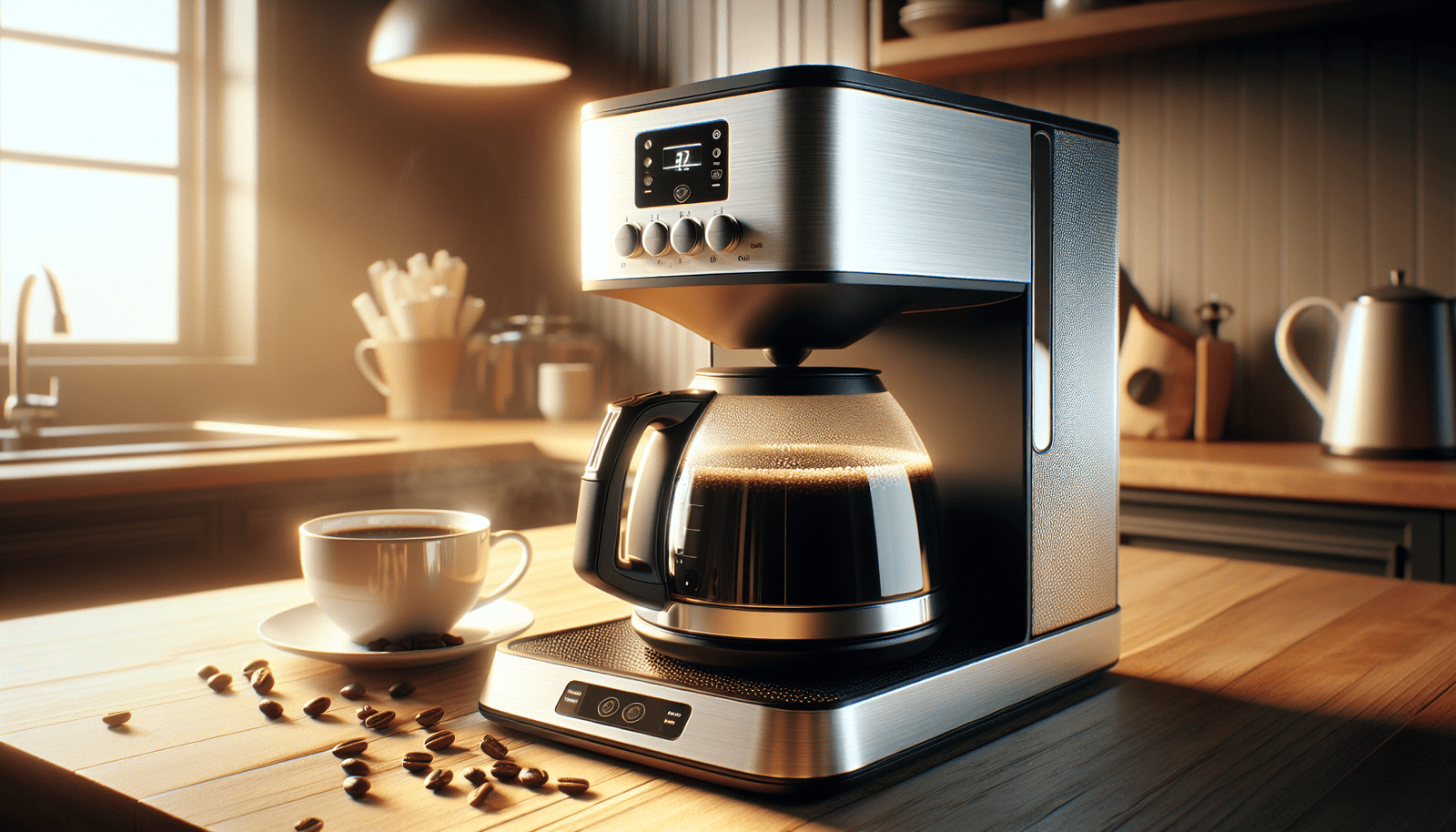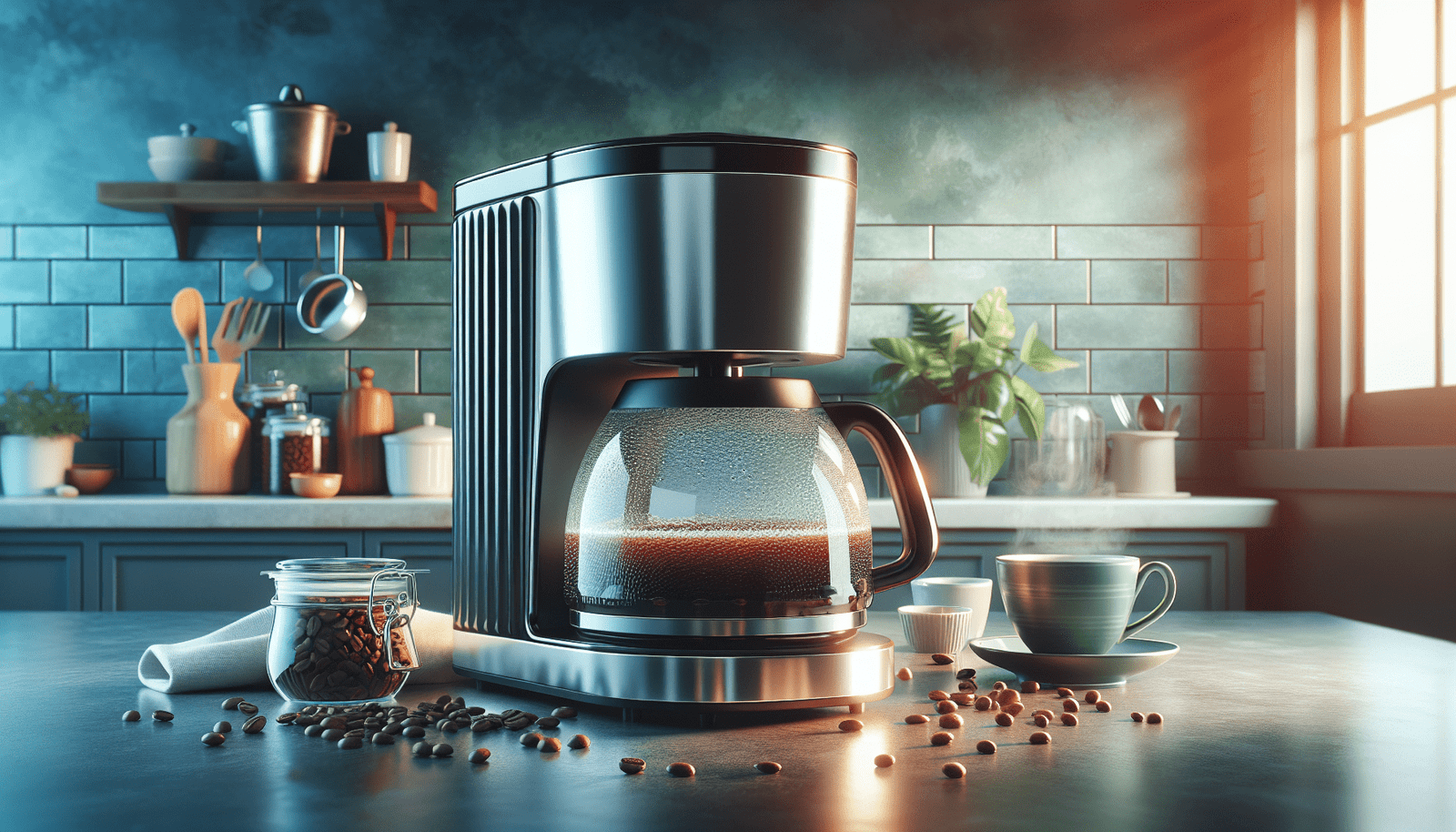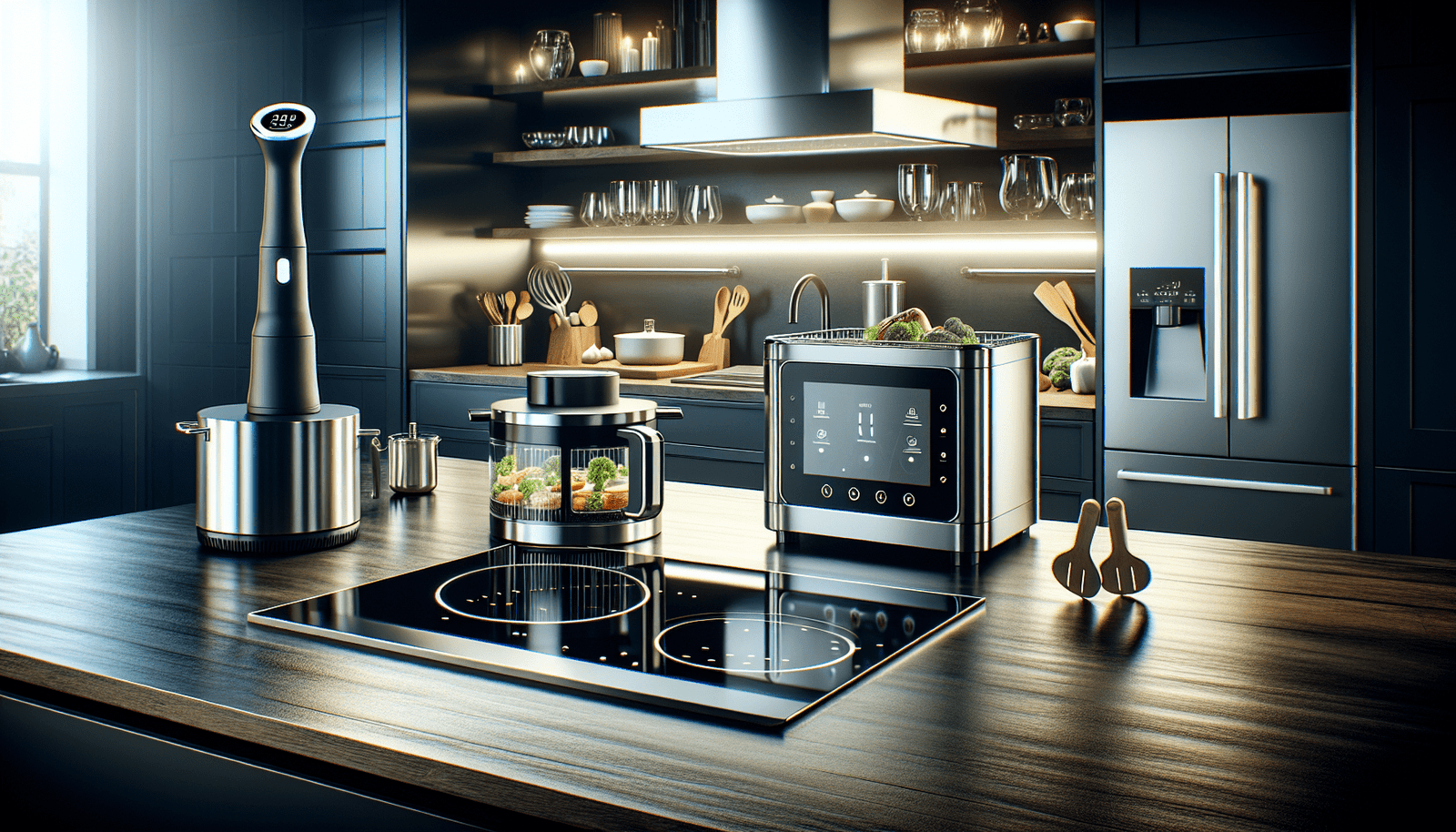In the bustling world of kitchen wonders, discovering the perfect coffee maker is like finding a treasure that brightens your mornings and elevates your daily routine. At Cooking Appliance World, it’s our mission to spice up your kitchen adventures by guiding you to the essential coffee makers for every home. With an array of options designed to cater to your unique brewing style and needs, our expert reviews and exclusive deals promise an enriching experience. Whether you’re a novice eager to explore the joys of coffee-making or a seasoned aficionado aiming to perfect your brew, our curated selection promises to transform your kitchen into a sanctuary of delightful aromas and exquisite tastes, ensuring the perfect start to your day, every day.

Single-Serve Coffee Makers
Overview of single-serve coffee makers
Single-serve coffee makers are the go-to option for coffee lovers seeking convenience without compromising quality. These compact machines brew one cup at a time, using pods or capsules, allowing you to enjoy a fresh, hot cup of coffee whenever you desire. They’re perfect for the fast-paced lifestyle, ensuring minimal waste and maximum flavor.
Advantages of single-serve coffee makers
The standout advantage of single-serve coffee makers is their convenience. You won’t deal with measuring coffee or dealing with filters. They’re also incredibly fast, often brewing a cup in just a few minutes. If variety is your spice of life, these machines allow you to switch between coffee types and flavors effortlessly from one cup to the next.
Popular models and brands
Keurig is synonymous with single-serve coffee, known for its K-Cup pods and wide range of models catering to different needs and budgets. Nespresso, on the other hand, caters to espresso lovers with its line of sleek, efficient machines and richly flavored capsules. Other notable brands include Breville and Hamilton Beach, each offering unique features and brewing capacities.
Maintenance tips for longevity
To keep your single-serve machine in top shape, it’s crucial to descale it regularly to remove calcium deposits. Use soft, damp cloths for wiping the exterior and remove the pod holder and drip tray for washing. Regularly changing the water filter, if your model has one, will also ensure your coffee tastes fresh.
Drip Coffee Makers
Understanding the drip coffee making process
Drip coffee makers brew by percolating hot water through coffee grounds, which then drips into a carafe. This process is beloved for its simplicity and ability to produce multiple cups of coffee in one go, making it ideal for families or gatherings.
Comparing popular drip coffee makers
Brands like Cuisinart, Mr. Coffee, and Braun stand out in the drip coffee maker category. They offer models that range from basic setups to those with programmable features, temperature control, and even built-in grinders for those who prefer using fresh beans.
Features to look for in a drip coffee maker
When shopping for a drip coffee maker, consider the carafe size to ensure it meets your needs. Programmable settings can be a godsend for those who want their coffee ready the moment they wake up. A built-in water filter and variable strength settings are also worth looking for, enhancing the flavor of your brew.
Cleaning and maintenance best practices
Regular cleaning is key. Most carafes are dishwasher safe, but the rest of the machine should be cleaned by hand with warm, soapy water. Descaling every few months with vinegar or a commercial solution removes mineral buildup and ensures your coffee maker works efficiently.
Espresso Machines
Basics of espresso extraction
Espresso machines work by forcing hot water through finely-ground coffee at high pressure, resulting in a concentrated and flavorful shot of coffee. This process requires precision regarding temperature and pressure, which differentiates good espresso machines from great ones.
Manual vs automatic espresso machines
Manual espresso machines give you full control over the brewing process, from tamping the grounds to controlling the water pressure and temperature. Meanwhile, automatic machines do most of the work for you, often with just the push of a button — perfect for those seeking convenience without sacrificing quality.
Key features of top-rated espresso machines
For the best experience, look for machines with high-pressure pumps (at least 9 bars), precise temperature control, and the ability to steam milk for lattes and cappuccinos. Options for customizing shot volume and strength are also valuable.
Care and cleaning recommendations
Regular cleaning is vital for maintaining espresso quality and machine longevity. Daily tasks should include wiping down the machine, cleaning the frothing wand, and flushing the group head. Descale the machine every few months to prevent mineral buildup.
French Press Coffee Makers
The simplicity of French Press brewing
French Press brewing involves steeping coarse coffee grounds in hot water for several minutes, then pressing down a plunger to separate the grounds from the liquid. This method allows oils and flavors to remain, resulting in a rich, full-bodied cup of coffee.
Selecting the right French Press
Choose based on material and capacity. Glass and stainless steel are popular options, with the latter being more durable and better at retaining heat. Capacity varies, so consider how much coffee you typically drink.
Brewing the perfect cup with a French Press
For the best results, use coarse-ground coffee and hot (not boiling) water. Allow it to steep for about 4 minutes before pressing down the plunger gently. Experiment with the coffee-to-water ratio and brewing time to find your perfect cup.
Cleaning guidelines for French Press coffee makers
Disassemble the French Press for cleaning and be thorough, as coffee residue can quickly build up. Most components are dishwasher safe, but check the manufacturer’s recommendation to be sure.

Cold Brew Coffee Makers
Introduction to cold brew coffee
Cold brew coffee is made by steeping coarsely ground coffee in cold water for an extended period (12-24 hours), resulting in a smooth, mellow coffee concentrate that’s less acidic and can be served cold.
Benefits of using a cold brew coffee maker
Using a cold brew coffee maker simplifies the process, offering a more consistent brew, and is less messy than DIY methods. It also provides the convenience of having cold brew ready in your fridge for up to two weeks.
How to choose a cold brew coffee maker
Consider size, material, and filtration system when choosing your maker. Some prefer glass for its purity of taste, while others like the durability of plastic or stainless steel. A fine-mesh filter is crucial for a smooth, grit-free brew.
Cold brew coffee recipes and maintenance tips
Explore different coffee beans and brewing times to find your preferred flavor profile. Mix your concentrate with water or milk to taste. Clean your maker after each batch by thoroughly rinsing the filter and vessel, ensuring no coffee grounds are left to spoil future batches.
Pour-Over Coffee Makers
The art of pour-over coffee
Pour-over coffee making involves pouring hot water over coffee grounds in a filter. The water then flows through the coffee, absorbing its flavors and aromas, and into a carafe below. This method gives you control over brewing time and temperature, making it a favorite among coffee aficionados.
Essential gear for pour-over coffee making
You’ll need a pour-over brewer, special filters, a gooseneck kettle for precise pouring, and a scale for measuring coffee and water. Popular brewers include the Hario V60 and Chemex.
Step-by-step guide to brewing pour-over coffee
Start with freshly ground coffee and heated water (about 195°F to 205°F). Wet the grounds with a bit of water first for “blooming,” then continue pouring in a slow, steady spiral. The entire process should take about 3-4 minutes.
Maintaining your pour-over coffee maker
Rinse the brewer and filter holder with hot water after each use to remove coffee oils and residue. For deeper cleaning, especially with glass equipment like the Chemex, use a mild dish soap. Avoid abrasive sponges that can scratch the surface.
Percolators
History and resurgence of percolators
Once a staple in every kitchen, percolators brew coffee by cycling boiling water through coffee grounds repeatedly. They fell out of favor with the rise of automatic drip machines but have seen a resurgence thanks to their robust flavor profile and nostalgic charm.
How to brew coffee using a percolator
Fill the bottom chamber with water, place coffee in the filter basket, and heat. As the water boils, it’s forced up a tube and over the coffee grounds. The process repeats, enriching the coffee’s strength each cycle. Timing is crucial to avoid over-extraction.
Advantages of percolators over other coffee makers
Percolators excel at producing strong, hot coffee and are particularly suited for dark roasts and bold flavors. They’re also durable, often made of stainless steel, and simple to use without the need for electricity, making them great for camping.
Cleaning and care tips for percolators
Disassemble the percolator for cleaning and wash each part with soapy water. Stubborn stains inside the pot can be removed with a mixture of vinegar and water. Ensure the tube and filter basket are clear of debris to prevent clogging.
Siphon Coffee Makers
Exploring the siphon coffee brewing method
Siphon coffee makers use a vacuum brewing method where water is heated in a lower chamber until expansion forces it into an upper chamber with coffee grounds. After brewing, a reverse vacuum draws the coffee back down, filtering it in the process. This theatrical method produces a clean, complex, and flavorful cup of coffee.
Choosing the right siphon coffee maker
Select based on size, material (glass is most common), and heat source (alcohol burner, butane burner, or electric). Consider also the ease of cleaning and whether you’re comfortable with the manual aspects of siphon brewing.
The science and art behind siphon brewed coffee
Siphon brewing allows for precise temperature control and total immersion brewing, factors that contribute to its distinct taste. The process, while intricate, rewards you with a cup that’s both a visual and sensory delight.
Maintenance and cleaning of siphon coffee makers
Given their delicate glass components, siphon coffee makers require careful handling. Wash all parts with mild soapy water and dry thoroughly. Handle the siphon tube with special care to avoid clogs and breaks.
Coffee Maker Combos
Benefits of combination coffee makers
Combination coffee makers offer the best of both worlds, catering to a variety of coffee preferences within one device. These versatile machines may combine drip coffee, espresso, and even frothing capabilities, saving counter space and accommodating different tastes and occasions.
Top combination coffee maker features
Look for a combo that offers independent brewing methods, allowing you to make drip coffee and espresso simultaneously if desired. Other desirable features include programmable settings, milk frothing attachments, and a user-friendly interface.
Comparing best coffee maker combos
When comparing models, consider the quality of each function. Some combos might make excellent drip coffee but fall short on the espresso side, or vice versa. Read reviews and consider brands known for their specialization in each type of coffee maker.
Guidelines for upkeep and multipurpose use
Regular maintenance is key for combination coffee makers, given their complexity. Follow the manufacturer’s guidelines for cleaning and descaling. For machines with milk frothers, clean after each use to prevent milk residue buildup.
Coffee Maker Accessories
Essential accessories for every coffee maker
Accessories enhance the coffee-making experience. Consider a high-quality grinder for the freshest flavor, a digital scale for precise measurements, and a good storage container to keep your beans fresh. For espresso, a tamper and frothing pitcher are must-haves.
Upgrading your coffee experience with accessories
Temperature-controlled kettles offer precise water heat for pour-over or French press coffee, significantly impacting the flavor. A milk frother can turn a simple cup of coffee into a luxurious latte or cappuccino.
Where to find and how to choose the right accessories
Look for accessories where you buy your coffee maker or at specialty coffee shops. Choose accessories compatible with your coffee maker and made from high-quality materials for durability and the best taste.
Care and maintenance of coffee maker accessories
Keep your accessories in top condition by cleaning them after each use. For grinders, remove oil buildup with grinder tablets or a brush. Wash frothing pitchers and kettles with soapy water, and dry thoroughly to prevent mold and bacteria growth.
From single-serve to siphon coffee makers and their respective accessories, you have a plethora of options to create your perfect cup of coffee. With the right care and knowledge, you can elevate your coffee experience, making every morning (or any time of day) a little bit more enjoyable.


